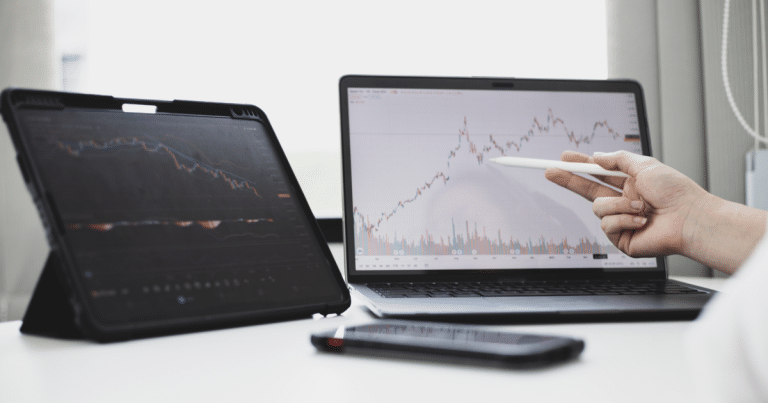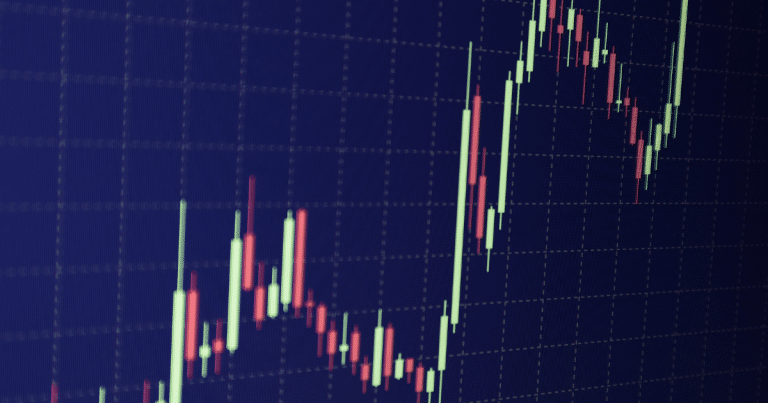
Cracking the Code of Time Series Forecasting
Time series forecasting is like having a crystal ball for traders, helping them pick the best times to buy or sell. By looking at past data, they can guess what might happen next and make smarter moves. Let’s break down how this works and why old data is so important.
How to Predict Trends
Time series forecasting uses different tricks to guess what’s coming based on what’s already happened. One popular method is the Box-Jenkins Model, also called ARIMA (AutoRegressive Integrated Moving Average). This model uses past data to predict future numbers (Investopedia).
Here are some key techniques:
- Moving Averages: This smooths out the noise to show the bigger picture. Check out more on moving average types.
- Exponential Smoothing: This gives more weight to recent data. Learn more at exponential moving average.
- ARIMA Model: This combines several methods to predict future points.
- Seasonal Decomposition: This breaks down data into trend, seasonal, and random parts to see the patterns better.
| Technique | What It Does | When to Use It |
|---|---|---|
| Moving Average | Smooths data by averaging | Spotting trends |
| Exponential Smoothing | Focuses on recent data | Short-term guesses |
| ARIMA | Mixes different methods | Complex patterns |
| Seasonal Decomposition | Splits data into parts | Seasonal effects |
Why Old Data Matters
Old data is the bread and butter of time series forecasting. Without it, guessing future trends is like shooting in the dark. Analysts need to pick the right time span—days, months, or years—to get accurate predictions.
Key points:
- Trend Analysis: Spotting long-term directions.
- Cyclical Fluctuations: Seeing patterns that repeat over time.
- Seasonality: Noticing regular changes at certain times.
Old data is crucial for:
- Training Models: Teaching the model from past behavior.
- Parameter Selection: Picking the right variables for accurate guesses.
- Contextual Understanding: Including real-life events and political decisions that affect markets.
For more on how old data shapes trading models, check out our articles on moving average trading strategies and simple moving average vs exponential moving average.
By mastering these forecasting tricks and using old data wisely, traders can make smarter decisions and pick the best times to act. Knowing these basics is key for anyone wanting to win in the stock market.
Time Series Analysis in Trading
Time series analysis is a game-changer for traders aiming to boost profits through stock averaging. It’s all about picking the right forecasting technique and knowing how different time periods affect your models.
Picking the Right Forecasting Technique
Time series forecasting uses past data to predict future trends. Think of it like looking into a crystal ball, but with numbers. Popular techniques include:
- Simple Moving Averages (SMA): This averages the closing prices of a stock over a set number of periods. It smooths out the noise, giving you a clearer trend.
- Exponential Moving Averages (EMA): Like SMA but gives more weight to recent prices, making it quicker to react to new info.
- Volume Weighted Average Price (VWAP): This benchmark gives the average price a security has traded at throughout the day, factoring in both volume and price.
- Moving Average Convergence Divergence (MACD): A momentum indicator that shows the relationship between two moving averages of a security’s price.
By mastering these techniques, you can better predict market moves and make smarter decisions about stock averaging.
Influence of Time Periods on Models
Choosing the right time frame is key. The time period you pick can make or break your forecasting model’s accuracy.
For example, in forex trading, the rule of four is handy for picking multiple time frames. Long-term traders might skip short-term frames like 15-minute or 60-minute. Instead, they should start with a long-term frame to spot the main trend, then zoom in for more detail.
| Holding Period | Suggested Time Frames |
|---|---|
| Long-Term | Daily, Weekly, Monthly |
| Medium-Term | 4-Hour, Daily, Weekly |
| Short-Term | 15-Minute, 60-Minute, 240-Minute |
Long-term traders should keep an eye on major economic trends to get a better grip on price action. Medium-term trading offers higher profits and less noise but comes with more risk and fewer opportunities. Short-term trading allows for quick gains and more opportunities but is more time-consuming and costly.
To make the most of stock averaging, think carefully about how different time periods affect your forecasting models. By picking the right time frames and techniques, you can better handle the stock market’s twists and turns and make more informed trading decisions.
For more tips, check out our articles on exponential moving average crossover strategy and moving average trading strategies.
Data Analysis Mistakes to Dodge
When diving into stock averaging and trading, sidestepping common data analysis blunders is key to making smart, profitable moves. Here are some pitfalls to watch out for to keep your data analysis sharp and on point.
Human Bias: The Sneaky Saboteur
Human bias can mess with your data analysis big time, from picking variables to reading results. Bias can lead you astray, wrecking your trading strategies. According to Pecan, biases can sneak in at different stages:
- Selection Bias: Picking data that backs up what you already believe.
- Confirmation Bias: Twisting data to fit your preconceived ideas.
- Anchoring Bias: Getting stuck on the first piece of info you see.
To dodge these biases, use objective, automated tools for data analysis. Platforms like Pecan’s predictive analytics can simplify complex tasks, cutting down on human error and boosting model accuracy (Pecan). Also, using different types of moving averages can give you a more balanced view. Check out our article on moving average types for more info.
Context is King
Grasping the context of your data is crucial for pulling out meaningful insights and avoiding wrong conclusions. Without context, even accurate data can lead you astray. As Pecan points out, context helps you understand the importance of data points, making sure you don’t jump to wrong conclusions.
Keep these factors in mind for better context:
- Historical Data: Look at past performance to predict future trends. See our section on the importance of historical data.
- Market Conditions: Understand how current market conditions affect data interpretation.
- Time Frames: Different time frames can offer different insights. For strategies using multiple time frames, visit our section on trading across multiple time frames.
Using the right statistical methods is also crucial. Picking the wrong methods can lead to faulty conclusions, as shown in a study by NCBI. For example, using the wrong statistical test might show a significant difference between groups when there isn’t one.
In short, being aware of human biases and understanding the context of your data are vital steps to avoid common data analysis mistakes. For more on effective trading strategies, check out our articles on exponential moving average crossover strategy and moving average trading strategies.
Trading Across Multiple Time Frames
Picking the right time frame can make or break your stock market game. Let’s dive into some strategies for forex traders and weigh the pros and cons of different time frames.
Strategies for Forex Traders
Forex traders often juggle multiple time frames to sharpen their trading strategies. This means looking at the same currency pair across different time frames to get a full picture of the market. A simple trick is the rule of four: pick three time frames with a four-fold difference between each. For instance, you might use 15-minute, 60-minute, and 240-minute charts (Investopedia).
Long-term traders should kick things off with a long-term time frame, like daily or weekly charts, to spot the main trend. Focus on the trend direction and make trades that go with the flow. It’s also key to keep an eye on major economic trends and fundamental factors that can shake up prices (Investopedia).
Benefits and Challenges of Different Time Frames
Each time frame has its perks and pitfalls. Here’s a quick rundown to help you pick the right one for your trading style.
| Time Frame | Benefits | Challenges |
|---|---|---|
| Short-term (minutes to hours) | Quick profits, less risk, more trading chances | Higher costs, time-consuming, more market noise |
| Medium-term (hours to days) | Bigger profits, more decision time, less noise | More risk, fewer trades, need to avoid short-term temptations |
| Long-term (days to months) | Aligns with fundamental trends, clearer direction | Needs patience, fewer trades, more capital needed |
Source: Investopedia
Short-term trading is great for quick profits and lower risk because you hold positions for shorter periods. But it can eat up a lot of your time, cost more, and be noisy (Investopedia).
Medium-term trading offers bigger profits and more time to think things through. There’s less noise than in short-term trading, but it comes with more risk and fewer opportunities. You’ll need to resist the urge to jump on short-term gains (Investopedia).
Long-term trading lines up with fundamental trends and gives a clearer market direction. However, it demands patience, involves fewer trades, and requires more capital.
Want to up your trading game across different time frames? Check out our resources on exponential moving average crossover strategy, moving average types, and volume weighted average price.
Making Sense of Data for Traders
If you’re a trader aiming to boost your profits, picking the right time frame is key. To do that, you need to make sense of your data. This means setting up a solid way to analyze your data and using visuals to make it all clear.
Setting Up Your Data Analysis
Having a repeatable way to look at your trading data makes things smoother and more accurate. A good process helps you spot trends and make smart choices. Here’s a simple way to do it:
- Clean Your Data: Make sure your data is accurate. Bad data means bad decisions. Ben Herzberg from Satori stresses this point (Databox).
- Find Patterns: Look for relationships and trends in your data to understand market behavior.
- Use Stats: Apply statistical methods to measure these relationships and predict future trends.
- Build Models: Use advanced models to simulate different trading scenarios and see what might happen.
PriceListo follows these steps to ensure they get a thorough analysis.
Why Data Visualization Matters
Turning numbers into visuals like graphs and charts makes complex info easier to understand. This helps you spot trends and patterns quickly, which is crucial for making smart trading decisions.
- Graphs and Charts: These help you see market movements and trend changes at a glance.
- Heatmaps: Great for visualizing volume and price movements over different time frames.
For example, a heatmap can show you the most volatile trading periods, helping you pick the best time to trade.
| Visualization Type | Purpose |
|---|---|
| Line Graphs | Track price trends over time |
| Bar Charts | Compare volume across different periods |
| Heatmaps | Visualize price and volume volatility |
Using tools for data storytelling can make your visuals even more impactful. Combining data with storytelling meets both analytical and creative needs, helping you understand insights in a more rounded way (IDEOU).
Want to dive deeper into trading strategies? Check out our articles on exponential moving average crossover strategy and moving average convergence divergence.
Picking the Right Time Frames in Trading
Nailing the right time frames is key for traders looking to boost profits through stock averaging. Let’s break down some smart comparison tactics for PPC accounts and how segmentation plays a role in data analysis.
Comparison Tactics for PPC Accounts
When you’re diving into PPC account data, picking the right time frames is a game-changer. You can look at yesterday, the last 7 days, last week, this month, last month, last quarter, the last 90 days, year over year, or even custom time frames. It all depends on your account size and how deep you want to go with your analysis.
For smaller accounts, stick with the last 14 to 30 days. Mid-sized accounts? The last 7 days or last week should do the trick. Bigger accounts? Go for the last quarter or the last 90 days to catch those bigger trends without getting bogged down by daily ups and downs.
| Account Size | Best Time Frame |
|---|---|
| Small | Last 14 to 30 days |
| Mid-sized | Last 7 days or last week |
| Large | Last quarter or last 90 days |
Three things to keep in mind when comparing data: the length of the time frame, the data you’re comparing, and the comparison period. Whether you’re looking at the previous period, year over year, or custom time frames, getting these right is crucial for making smart decisions in PPC accounts.
Custom time frames can be a lifesaver in specific scenarios, like comparing sales data from different periods to see how promotions are doing or factoring in conversion time lag. They give you insights that standard periods might miss.
The Role of Segmentation in Data Analysis
Segmenting your data is a must for accurate analysis. You can break it down by the whole account, specific network types (like display, search, shopping, video), or even individual campaigns or ad groups. This gives you a clearer picture of trends within each segment.
| Segmentation Level | Examples |
|---|---|
| Entire Account | Overall performance metrics |
| Network Types | Display, search, shopping, video |
| Campaigns | Specific promotional campaigns |
| Ad Groups | Individual ad group performance |
Segmentation helps you figure out what’s working and what needs tweaking. For example, looking at different moving average types can show you which strategies are killing it in different market conditions.
By segmenting data, you can make smarter decisions and fine-tune your strategies to rake in more profits. For more on effective segmentation, check out our article on moving average trading strategies.
Getting the hang of these time frame selection and data segmentation strategies can seriously up your stock averaging game. For more tips, dive into our guides on exponential moving average crossover strategy and volume weighted average price.








Great article, I’m going to try using these techniques for my stock market analysis, hopefully I can make some good calls
Interesting article Ive been using ARIMA models for a while now but I might have to look into these other methods too Could you do a deep dive on them
i love how you explained why old data is so important, most people don’t think about it that way.
It’s a good read but I think it’s missing a bit on the practical side. Like, how do you actually apply these things in real-world situations? Would love to see an example of an actual analysis.
This is super helpful, thanks! I’ve been trying to wrap my head around time series for a while now, and this really clarified things. Now I just need to find the time to actually implement it.